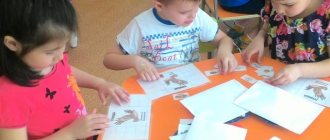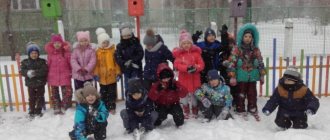Winter sports for children are a great opportunity to provide the necessary physical activity and have fun.
As a rule, parents are afraid of harsh temperature conditions: it is important to note that if the rules are followed, cold has a positive effect on the body.
In addition, outdoor sports in the winter season allow you to improve your health and strengthen your child.
Benefits of winter sports
Preschool children need physical development during the winter season. Sport allows you to get rid of stress, communicate with peers, and also reduce the amount of time spent at the computer or TV.
The main advantages of winter sports include:
- The ability to combine physical activity with hardening. At sub-zero air temperatures, you can skate or ski: with sufficient exercise, the cold helps strengthen the immune system.
- Strengthening the muscle corset, developing coordination, increasing oxygen saturation of the brain, increasing the production of endorphins and adrenaline.
- Preserving children's health: playing outdoors burns extra calories.
- Relieving stress, getting rid of feelings of depression. Playing sports allows you to distract yourself and redirect your attention.
- Socialization with peers.
Contraindications for exercise
When choosing a sport for a child, parents should pay special attention to the child’s health.
There are a number of contraindications that apply not only to certain sports, but also to physical activity in general:
- Children suffering from spinal curvature are prohibited from engaging in sports that promote asymmetric muscle development. This includes ice skating and skiing.
- A child with impaired vision should not play hockey. However, experts recommend teaching your child to ski.
- If you have diseases such as sinusitis, tonsillitis or sinusitis, you should not engage in any winter sports.
Particular attention should be paid to the selection of physical activity for children who suffer from diabetes or heart disease.
Luge
Luge is an activity that attracts the attention of not only children, but also adults. The moment of flying on a sleigh along an ice chute at great speed leaves no one indifferent.
This is a rather dangerous and difficult sport, which, however, attracts young athletes. Training takes place outside, among snow and ice: the technique of controlling one’s own body and the sled is honed.
In summer, training is also carried out outdoors: the sled is equipped with wheels. This is necessary in order to maintain training conditions and not lose acquired skills.
How to involve your child in sports in winter?
- Watch winter sports together. Instead of watching a movie, watch sports by watching hockey games, skiing competitions, figure skating and speed skating. Bring some snacks and watch your kids watch the competition. Pay attention to which sports attract children's attention. Find ways to discuss what they find most interesting. This will help you understand what sport they might try.
- Ask your children about their favorite outdoor games or summer sports. Understanding what summer sports your children enjoy will help determine which winter sports pique their interest. For example, the structure of a hockey team may be attractive to a young soccer player; dance element of figure skating - for a young ballet student; the racing nature of skiing or speed skating - for a young runner or swimmer; and snowboard tricks for the young skateboarder.
- Explore the sport during school holidays or on weekends. Involve your children in winter activities during the school holidays. Find open skating rinks or plan a short trip to the mountain and take a beginner ski class. Don't tell your children directly that they play different sports.
- Explore school clubs and sections. As soon as children begin to show interest in sports, support them and find opportunities for them to train. Schools often hold an annual cross-country ski race or something similar. But some schools may be limited in children's sports sections. Try to find a nearby skating rink or local team that will allow your child to participate or observe a practice.
No matter what sport your kids choose, the top priorities should be to have fun and stay safe.
skiing
Cross-country skiing is another challenging sport that anyone can master the basics of. Even if the hobby remains a hobby, the exercises will have a beneficial effect on the general condition of the child’s body: skiing is good for both physical and psychological health, serves as a preventive measure for the development of various diseases and prevents the appearance of excess weight.
Snowboarding
Snowboarding is an Olympic sport, which includes the following disciplines:
- Parallel slalom.
- Giant slalom.
- Snowboard cross.
- Halfpipe.
- Slopestyle.
- Big air.
- Quarterpipe.
- Jibbing.
Each of the above types of snowboarding has certain parameters: the child can choose what he likes best.
When choosing this sport, you should remember that any discipline requires patience and strength: long training sessions are carried out on slopes and on specially equipped areas.
Snowboarding often has something in common with other sports: during periods when there is no snow on the slopes, athletes practice their skills using a board on wheels. According to experts, a skateboard is an excellent alternative to a board, through which you can practice the mechanics of movements. The history of sports knows cases when skaters switched their attention to snowboarding and went into the big sport.
It is important to note that a snowboarder’s training package includes mandatory trampoline training and general physical training.
Summary of educational activities on cognitive development in the senior group on a winter theme
Summary of direct educational activities in the senior group “Winter Sports” (Educational area “Cognition”)
Goal: to introduce children to winter sports, broaden their horizons, and create a desire to engage in some kind of sport themselves. Objectives: 1. Clarify children’s knowledge about winter sports.
2. Ensure that the vocabulary on the topic is enriched and clarified. Arouse interest in physical education and sports. 3. Promote the development of logical thinking and attention; 4. Form ideas about the importance and health benefits of playing sports. 5. Promote the formation of a respectful attitude towards each other. Materials and equipment: laptop, projector, pictures of athletes and pictures with the necessary equipment for the athlete. Progress of activity:
Educator : Guys, how do you understand the proverb? Anyone who plays sports gains strength! (children's answers) Educator: To be healthy you need to play sports, and sports is work. Guys, tell me, what is sport? (children's answers) Educator: Sports are physical exercises for the development and strengthening of the body, as well as regular training and sports competitions. What are people who play sports called? What do you need to do to become an athlete? (children's answers). Educator: That's right, you need to do exercises, exercise, and harden yourself. Why do you think people play sports? (children's answers). Educator: That's right. Sport makes a person strong, resilient, and improves health. What winter sports do you know? (children's answers). Well done, you know a lot of sports. Today we will talk to you about winter sports. Winter sports are those played during the cold winter months. Snow and ice are a must for winter sports. Winter sports can be divided into two groups: sports played on snow and sports played on ice. Look at the screen. 1. Cross-country skiing is a ski race over a certain distance on a specially prepared track. 2. Biathlon is a Winter Olympic sport that combines cross-country skiing with rifle shooting. 3. Ski jumping is a sport that includes ski jumping from specially equipped springboards. 4. Alpine skiing - descent from the mountains on special skis. The fastest one wins the competition. 5. Figure skating is a winter sport in which athletes skate on ice while performing additional elements accompanied by music. 6. Speed skating is a sport in which it is necessary to cover a certain distance on an ice stadium in a closed circle as quickly as possible. 7. Luge is a downhill competition on a single or double sleigh on a pre-prepared track. Athletes sit on the sled on their backs, feet first. The sled is controlled by changing body position. 8. Hockey is a sports game consisting of a confrontation between two teams, which, passing the puck with their sticks, strive to throw it the greatest number of times into the opponent’s goal and not let it into their own. The team that scores the most goals into the opponent's goal wins. Didactic exercise: “Find a pair” Educator: Guys, on your table there are pictures of athletes and pictures with the necessary equipment for the athlete (all the pictures are mixed up). Help each athlete find his equipment, skis for a skier, a stick for a hockey player, etc.) Educator: Well done, you completed the task. Physical education (The text of the poem is pronounced and the accompanying movements are performed at the same time.) How interesting it is for us in winter! (points thumb up) We go on sleds in a crowd, (imitate sledding) Then we will play snowballs, (imitate making and throwing snowballs) We all put on skis together, (“put on” skis, “take” sticks, “ride” ) Then everyone went on skates, (pretend to be skating) Fun days in winter! (points thumb up). Didactic exercise “Complete the sentence” - Ice skating...skater. - Sledding... luger. - Skiing... skier. - Skiing from the mountains... alpine skier. - Runs on skis and shoots from a rifle... biathlete. -Running on skates with a puck and a stick...hockey player. - He is engaged in figure skating... a figure skater. Educator: Guys, we have now become acquainted with winter sports. Have you memorized all the sports? And this is what we will check now. Riddles: And the athlete shoots at the target, And he races on skis. And the sport is called very simply: (biathlon). How beautiful they are on the ice: Both athletes and artists, And they dance just great! Who is this? – ... (Skaters). There are sticks and there are goals, and everything is okay with the puck! This type of sport is called... (hockey). Look: the skier rushes, And then flies like a bird, Having made a jump from the peaks. And he helped him... (springboard). Educator: Well done! You know winter sports well. What winter sport would you like to try? (children's answers). What do you need to do to become an athlete? (children's answers). Educator: If you walk more, do exercises and play sports, then you will be strong and healthy. And if you want to become an athlete, you need to work hard! After all, sport is a lot of work!
We recommend watching:
Abstract of OOD on application in the senior group Winter fun in the senior group. Scenario Lesson with elements of training for the senior group on the topic: Winter Summary of a lesson on theatrical activities in the senior group on the topic: Winter
Similar articles:
Physical education leisure in the senior group “Hello, Zimushka-Winter”
Summary of the lesson “Birds in winter.” Senior group
Summary of a lesson in the senior group on the winter theme “Winter Fun”
Summary of a lesson in the senior group on the topic: Winter quarters of animals
Entertainment “Visiting Winter” in kindergarten in the senior group
Hockey
Hockey is a game that is perfect for the prevention of diseases of the spinal column, musculoskeletal system, respiratory and cardiovascular systems. In addition, active participation in this type of sport contributes to the development of a child’s athletic physique, strengthens ligaments and increases the endurance of the body as a whole. The child’s motor skills improve and coordination of movements develops.
It should be noted that hockey lessons are useful for inattentive children, as well as those who suffer from lack of visual acuity: on the ice you will have to carefully monitor the position of the puck, as well as monitor the movements of other players.
Parents should not forget that this sport develops the child’s ability to work in a team. Training is a period when friendships are established between children and discipline is developed. All this has a beneficial effect on further communication with others.
Another important factor that should not be forgotten when choosing a sport for a child is strengthening health and immunity. According to research, in case of illness, a hockey player will need much less time to recover than a person who is far from ice sports.
At what age can you engage in winter sports?
Winter sports for children have age restrictions, however, some types can be practiced from the age of four. The difference in indicators is determined by the child’s physical health (development of the musculoskeletal system, stability of the nervous system, etc.) and his readiness from a psychological point of view: the ability to communicate, awareness of possible danger and responsibility for one’s actions.
Of course, a lot depends on the purpose for which you send your child to sports - for the soul or in order to raise a future Olympic champion. You can equip him with a hockey stick and puck as early as 4 years old, but professional training should begin at 9 years old, and then take into account parameters such as weight, muscle mass, endurance and ability to work in a team. By the same principle, you can put a child on skates immediately after he has learned to walk, although it is better to think about serious activities from the age of 6. And, for example, skiing and luge are available for children from 5-6 years of age, snowboarding is possible practice since age 7.
Skating
Parents with small children are advised to tell their children in advance about what winter is, and also to explore winter sports with them - skating and skiing. You can use pictures or clippings from children's magazines to help.
The amount of time needed to learn how to skate on ice depends on the age of the child: the earlier he starts skating, the faster he will master the skating technique. Those mothers and fathers who themselves know how to stay on the ice can engage in training.
Figure skating
Children's figure skating is a sports art that belongs to the Olympic sports. Despite the fact that such activities are characterized by an increased risk of injury, they help improve the child’s health, increase immunity, strengthen character and develop positive traits.
When choosing this sport, parents should be prepared for the fact that it is quite expensive. In addition, a huge number of exciting moments await them during the development of their child’s sports career.
Children's drawings on the theme of winter sports, step by step with photos
Snowboarding
- Draw a snowboard tilted. Draw the contours of the head and legs according to the diagram.
- Since the snowboarder will be shown crouching, draw in the shins.
- Draw the helmet and mask on the head, complete the design of the knees by rounding them.
- Draw the shoulders and arms.
- Complete the drawing with small details.
skiing
- Sketch the athlete in motion using lines.
- Give a more lively image by completing the torso, arms, and legs.
- Add skis and poles.
- Detail the image.
Figure skating
- Sketch the angle formed by the skater's left arm and body.
- Draw another leg and sketch out the head.
- Draw the girl's left arm and the outline of her skirt.
- Add skates, the visible part of the right hand, and draw the head.
How to keep your child safe when playing sports in winter
So that mothers and fathers do not have to worry about the safety of their child while practicing one of the winter sports, it is recommended to follow simple but effective safety rules:
- The selected equipment and clothing that provides reliable protection against frostbite of the body should only be of high quality.
- When choosing skates, you should pay attention not only to quality, but also to suit the age and size of the child.
- A qualified trainer is the key to children's safety.
- When choosing a slope at a ski resort, you should make sure there are no obstacles or ice.
- You should avoid skating on frozen ponds and other questionable surfaces.
- You should always have a first aid kit with you with anti-frostbite products, ointments, creams and bandages.
How to keep your child safe
When sending their child to a winter sports section, parents think about his health. After all, training takes place in sub-zero temperatures, the baby can freeze, fall, hit and get hurt.
Warm clothes
The child should always be warm, but this does not mean that he needs to be wrapped in many layers of clothing. Being in constant motion, the baby sweats, unbuttons his jacket and quickly catches a cold. You need to dress according to the weather. This reduces the risk of getting sick or getting frostbite.
High-quality equipment
Don't skimp on safety equipment. It’s better to buy high-quality and comfortable equipment that will last a long time than to risk your child’s health. Skates, skis, sleds should be selected according to age and size so that the child can use them comfortably.
Good coach
At first, you need to hire an experienced trainer. He forms the child’s idea of sports, is responsible for safety, is always nearby and helps the child. Hiring a teacher individually or sending your child to a section is your choice. But do not forget, the child must be in society, contact with peers, make friends in order to be sociable and social. And the circle is ideal for combining the acquisition of new knowledge and skills with the process of socialization and entertainment.
Safe places to study
Be careful and attentive when choosing a route for winter sports training. There should not be many obstacles: frozen blocks, stones, branches, ice - anything that could prevent the child from successfully riding. Do not let children onto frozen bodies of water - even seemingly solid ice can be dangerous. Explain to your child that he can only ride on specially designated areas. You should not experiment on dubious slopes - this can lead to dire consequences.
So, winter should not be an obstacle to playing sports! Skis, sleds, snowboards, skates - it's fun and useful. The mission of parents is to interest the child in trying this or that sport. When your child gets the hang of it, you don’t need to worry yourself about every bruise on your knee. This will teach the baby to be stronger and overcome obstacles, which is very important in everyday life. When choosing a winter sport, do not put pressure on your child; he should show interest on his own. If your child doesn’t like skating, you shouldn’t force him to go figure skating, but rather offer to try skiing or snowboarding. After all, a child’s personality and worldview should be formed through their own trial and error, and not through parental whim and direction.
Tips for parents
Since it is important for every parent to develop their child’s skills, they should pay attention to the advice of psychologists:
- Communication plays a big role in the development of sports skills. You need to not only talk to the child, but also be able to listen to his answers and understand what he is talking about.
- The right motivation. Don't confuse your own desires with your children's. The desire to play sports should appear in the child, and not in his mother or father.
- Possession of certain knowledge about a specific sport.
- Communicating in a positive way helps improve results.
- Parents must learn to view failure as a positive aspect of learning: only through failure can a child learn something new.
It is important that mom and dad know how to guide their child, but at the same time allow him to take part of the responsibility for the training process and fully feel his involvement in the results achieved.
Interesting: Top 10 best children's balance bikes








